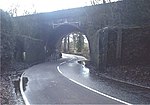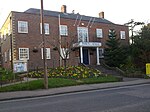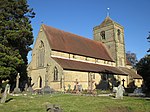Borde Hill Garden
Botanical gardens in EnglandCountry houses in West SussexGardens in West SussexMid Sussex DistrictTourist attractions in West Sussex

Borde Hill Garden is a garden located 1.5 miles (2.4 km) north of Haywards Heath, West Sussex in southern England. It is set in over 200 acres (80 ha) of garden, park and woodlands which has views across the Sussex High Weald. Borde Hill Garden is planted in “living garden rooms”, each offering a different character and style. It is home to many rare shrubs: from rhododendrons, azaleas and magnolias to roses, as well as numerous trees including one of the largest collections of champion trees in a private property in Britain (82 specimens as of 2013).
Excerpt from the Wikipedia article Borde Hill Garden (License: CC BY-SA 3.0, Authors, Images).Borde Hill Garden
Borde Hill Lane, Mid Sussex Ansty and Staplefield
Geographical coordinates (GPS) Address Website External links Nearby Places Show on map
Geographical coordinates (GPS)
| Latitude | Longitude |
|---|---|
| N 51.021985 ° | E -0.1129 ° |
Address
Borde Hill
Borde Hill Lane
RH16 1XN Mid Sussex, Ansty and Staplefield
England, United Kingdom
Open on Google Maps










